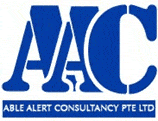25 Nov 2021
Speeches
Opening Address by Mr Daniel T’ng, Co-Chairman,
WSH Council (Facilities Management) Committee at the
WSH Forum for Facilities Management Industry 2021 on
Thursday, 25 November 2021, 2:30pm
Mr Bernard Soh, President, Singapore Institution of Safety Officers,
Mr James Lee, President, Singapore Lift & Escalator Contractors & Manufacturers Association,
Fellow WSH Council Facilities Management Committee Members,
Industry partners and supporters,
Ladies and gentlemen.
Introduction
1. Good afternoon and welcome to the WSH Forum for the Facilities Management Industry, the second track of today’s full-day event.
2. The first track, ‘Safety in Refuse Handling Equipment’, addressed safety in waste management, especially for our cleaners. This afternoon, we will broadly address WSH topics for the entire facilities management ecosystem. We are honoured to have with us five distinguished speakers from the industry and regulators to share their insights.
WSH Performance of the FM Industry
3. Let me start off by sharing the WSH situation in the FM industry. Over the past five years, we have seen a steady decline in workplace fatalities with seven cases in 2016 to two cases in 2020.
Sadly, this year, there have been three fatalities so far, the most recent being a worker who died after getting trapped in the refuse handling equipment of a residential block last month. This morning’s session was intended to share the lessons from that, with speakers addressing how to prevent such an accident from occurring again.
Capability Building for the Cleaning Sector
4. Slips, Trips and Falls, or STFs, have also constantly been the top cause of major injuries for the FM industry. This is especially so for the cleaning industry, which has unfortunately accounted for more than a third of all STF injuries in the FM industry for the past five years.
5. One way to improve the competencies of our cleaners is through training. In June this year, the Tripartite Cluster for Cleaners announced that all resident cleaners will be trained and certified in a module on WSH by 2022. This is to ensure their personal safety when carrying out cleaning tasks, especially with the increased cleaning demands and standards brought on by COVID-19.
6. Safety does not lie solely on a worker’s shoulders. It is a shared responsibility with the employer. Under the WSH (Risk Management) Regulations, companies need to implement Risk Assessments and put in place control measures to mitigate or eliminate risks. You may have heard of the third revision of the “Code of Practice on Workplace Safety and Health Risk Management”, unveiled recently. It has been made more relevant with how to manage infectious disease outbreaks, risks to workers’ mental well-being and terrorism threats. I encourage everyone to visit the WSH Council’s website to download it.
Care for One’s Personal Health and Well-being
7. Employers should also take the responsibility to ensure their workers are healthy at work. We must learn to live with COVID-19, and we are likely to encounter other infectious diseases as well in the future. A healthy and safe workplace in our built environment is therefore very important.
8. Air quality monitoring and improving indoor ventilation can help building owners manage COVID-19 by reducing transmission risks. We are glad to have the National Environment Agency share with us later about effective ventilation and how new technology can help building owners monitor indoor air quality easily.
9. Further to being physically healthy, being mentally healthy is as important and has been at the forefront. We urge employers to take care of your workers’ well-being. To help you in your journey, the WSH Council has made available resources for use at your workplace such as the Total WSH programme and the iWorkHealth tool. Our distinguished speakers will share more about mental health and Total WSH later.
Launch of “WSH Guidelines on Working Safely During Maintenance of Escalators and Moving Walks”
10. Specialists and technicians in the Lift and Escalator industry face multiple risks to ensure the smooth operation of these equipment. One way to prevent accidents is to improve the knowledge and competencies of our workers, especially when they are operating and maintaining equipment in the lift shaft and machine room. I am happy to announce the launch of the “WSH Guidelines on Working Safely During Maintenance of Escalators and Moving Walks” today.
11. The Guidelines is a culmination of many months of effort by tripartite partners to elevate safety standards for the Lift and Escalator industry so that technicians can go home safe and healthy to their families. I would like to extend my heartfelt thanks to Mr James Lee, President of the Singapore Lift & Escalator Contractors & Manufacturers Association, and members of the Workgroup for their technical expertise and invaluable contributions to the guide.
12. A copy of the Guidelines is available for all attendees here today, or you may download a softcopy from the WSH Council’s website.
Conclusion
13. In conclusion, I would like to thank our speakers who have taken time out of their busy schedules to share with us a diverse range of topics today. I hope you will enjoy the rest of the forum and have a fruitful afternoon. Together, let us prevent all injuries at work and go home safe and healthy to our families. Thank you.
